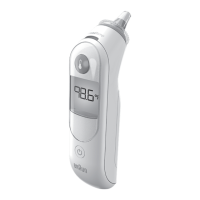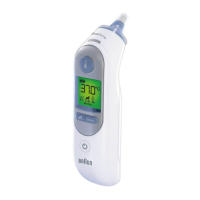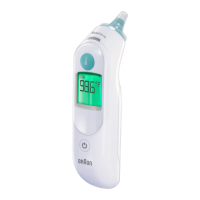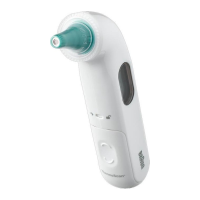It is not intended to interpret hypothermic temperatures. Do not allow children under 12 years to take
their temperature unattended.
Do not modify this equipment without authorization of the manufacturer.
Parents/guardians should call the pediatrician upon noticing any unusual sign(s) or symptom(s). For
example, a child who exhibits irritability, vomiting, diarrhea, dehydration, seizure, changes in appetite
or activity, even in the absence of fever, or who exhibits a low temperature, may still need to receive
medical attention.
People who are on antibiotics, analgesics, or antipyretics should not be assessed solely on
temperature readings to determine the severity of their illness.
Temperature elevation may signal a serious illness, especially in neonates and infants, or in adults
who are old, frail, or have a weakened immune system. Please seek professional advice immediately
when there is a temperature elevation and if you are taking temperature on:
Neonates and infants under 3 months (Consult your physician immediately if the temperature
exceeds 99.4 °F or 37.4 °C).
Patients over 60 years of age (Fever may be blunted or absent in older patients).
Patients having diabetes mellitus or a weakened immune system (e.g., HIV positive, cancer
chemotherapy, chronic steroid treatment, splenectomy)
Patients who are bedridden (e.g., nursing home patient, stroke, chronic illness, recovering from
surgery)
A transplant patient (e.g., liver, heart, lung, kidney).
This thermometer contains small parts that can be swallowed or produce a choking hazard to children.
Keep out of reach of children under 12 years.
Body temperature
Normal body temperature is a range. It varies by site of measurement, and it tends to decrease with
age. It also varies from person to person and fluctuates throughout the day. Therefore, it is important
to determine normal temperature ranges. This is easily done using Braun ThermoScan. Practice taking
temperatures on yourself and healthy family members
to determine the normal temperature range.
Note: When consulting your physician, communicate that the ThermoScan temperature is a
temperature measured in the ear and if possible, note the individual’s normal ThermoScan
temperature range as additional reference.

